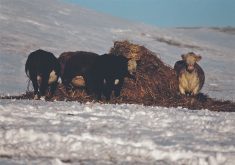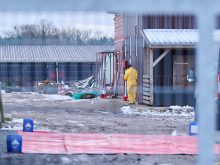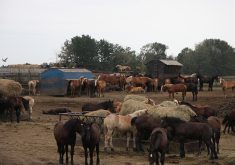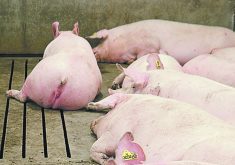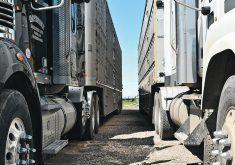Canada’s second largest food processor plans to phase out gestation stalls within 10 years.
Olymel announced the decision in its annual report and says 10 years should give producers enough time to retrofit barns.
“It is in the interest of everyone to do the change because mostly clients and consumers are requesting it,” said company spokesperson Richard Vigneault, who is based in Montreal.
Olymel is talking with suppliers to determine the best way to phase in open housing systems for pregnant sows because they know the transition could be costly.
Read Also

Farmers asked to keep an eye out for space junk
Farmers and landowners east of Saskatoon are asked to watch for possible debris in their fields after the re-entry of a satellite in late September.
“We know the situation is not easy for the producer of course. They have been through a lot of difficulty in the last few years,” he said.
The company has acquired Big Sky Farms in Saskatchewan, which must make the changes as well.
The Humane Society International-Canada released the decision March 22 with Olymel’s permission.
The organization focuses on the commercial seal hunt, puppy mills, battery cage laying hens, gestation stalls, horse slaughter, shark finning, animal transportation and trophy bear hunting.
In a news release the group said the decision gives the new national swine code of practice more validity.
“If the updated code is to be relevant for Canadian producers and respected in international markets, the code development committee must take into account the overwhelming global trend away from the use of gestation crates and include a timeline for the complete elimination of these confinement systems from the Canadian pork industry,” said the release.
The national swine code of practice is scheduled for release June 1 for public comment and calls for the phasing out of gestation stalls by 2024.
The new standards could be costly for pork producers who have not seen profits since the first quarter of 2012.
“Producers today are not making any money regardless of what they are doing,” said Darcy Fitzgerald, manager of Alberta Pork.
Losses are around $35 per head and retail pork is selling at below the cost of production.
“To ask a producer to do something completely different now, which will cost a lot of money when he is making no money, is really unrealistic. If people are pushed too far, there just won’t be any production,” he said.
He said stores should offer a choice at retail and consumers who want pork from open stall housing barns should pay more.
Barns are built with a 25-year plan and according to approved standards at the time of construction. It could cost an average farm more than $250,000 to retrofit a barn.
“If a producer is making a half decent living he has no problem trying to find ways to do different things. If a customer asks for a different way of producing a pig and he can do it, then I am sure he will go that direction,” he said.






